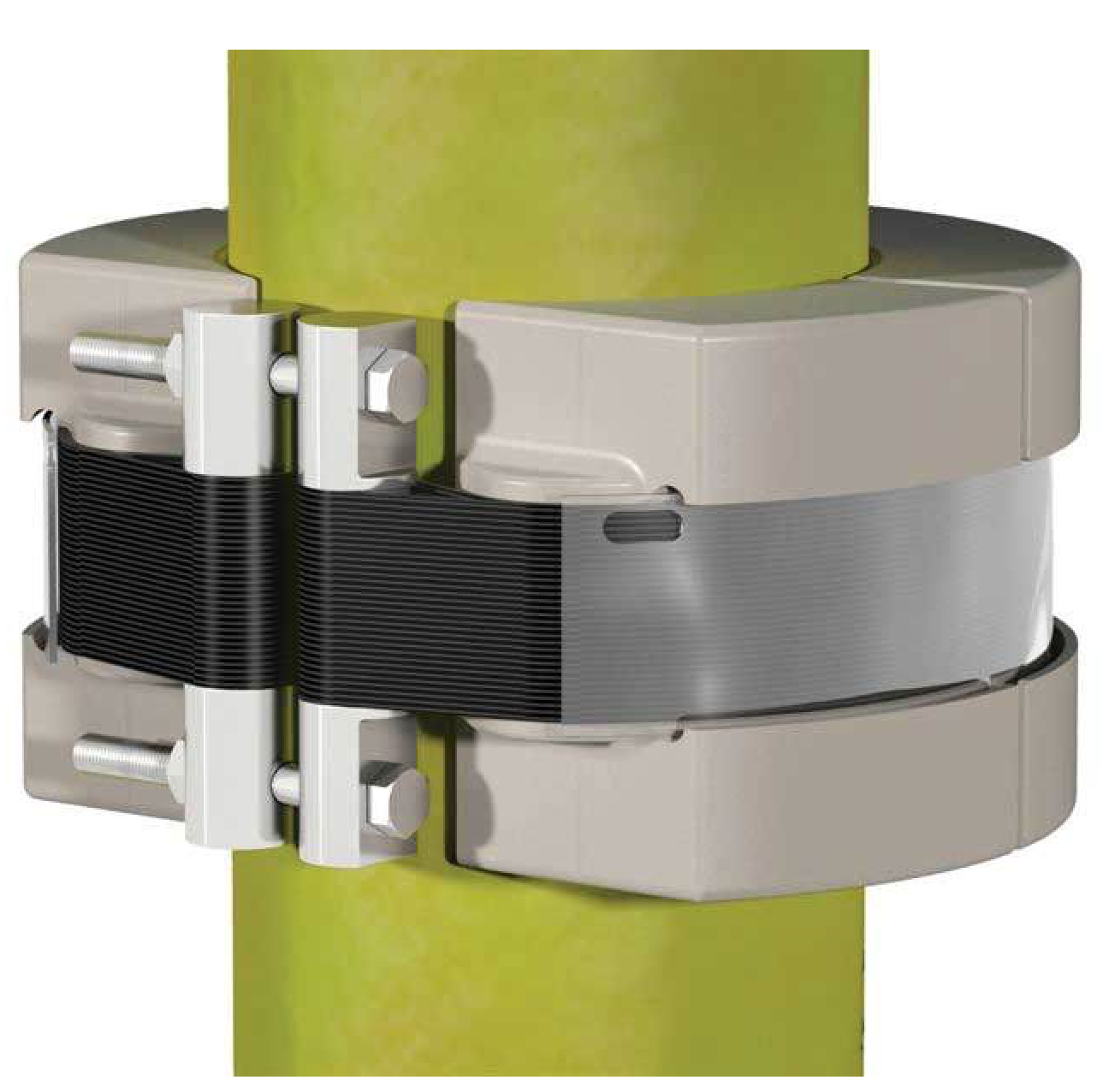January 2018, Vol. 245, No. 1
TechNotes
Trelleborg Receives Design Certification for Type 3 Clamps

Trelleborg’s offshore operation in Skelmersdale, England, has been certified for the design of its Type 3 Clamp under the American Petroleum Institute (API) specification for flexible pipe ancillary equipment (API 17L1 Ed. 1 2013). This is an important milestone, as the full suite of qualification requirements relating to the design methodology of Trelleborg’s clamps and distributed buoyancy modules (DBM) is now complete.
The Type 3 Clamp is a design primarily comprising of a syntactic foam clamp body split in to a number of segments, an upgraded titanium tensioning system and high tenacity straps. Typically used in high load capacity and lower pipeline compliancy applications, this clamp provides an axial restraint on the client pipeline/flexible riser to locate a DBM.
The clamp can also be used for other applications, for example, in support of ballast modules or ballasted Uraduct used within a riser configuration or to increase the submerged weight along the riser section for additional stability.
The certificate was awarded by Lloyds Register EMEA, acting as an independent verification agent. The design verification was completed by conducting a thorough audit of all design documentation and calculations as well as supporting material qualification and test data.
The API 17L1 specification defines the technical requirements for dimensionally and functionally safe, interchangeable flexible pipe ancillary equipment that is designed and manufactured to uniform standards. These industry standards determine the minimum requirements for the design, material selection, manufacture, documentation, testing, marking and packing of flexible pipe ancillary equipment.
Trelleborg DBMs are used between a subsea structure and a surface vessel or platform to reduce top tension loads and to maintain project-specific riser configurations. The Type 3 Clamp, as well as the API 17L1-approved Type 4 Clamp allow for larger pipeline tolerances and contractions.





Comments